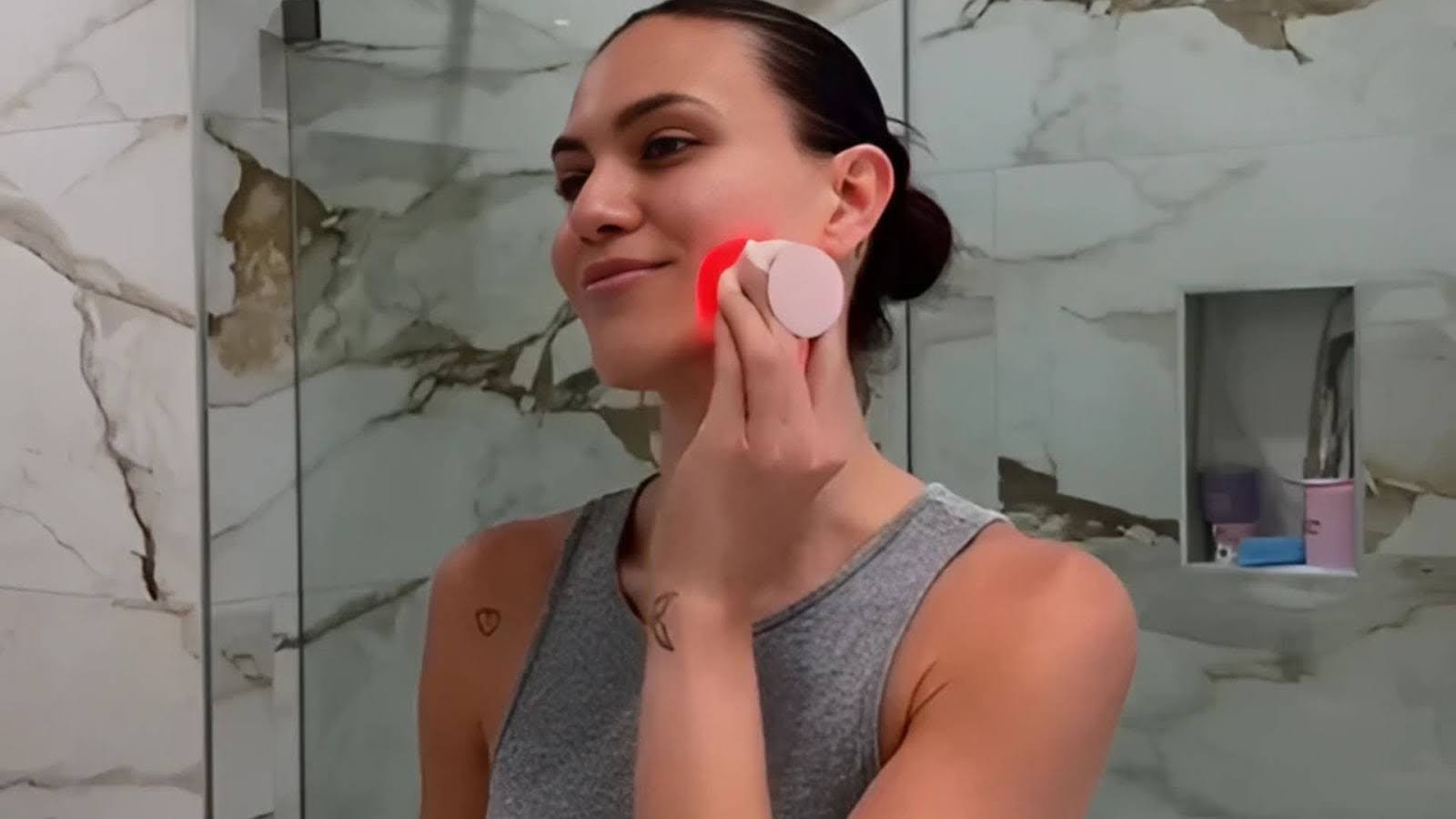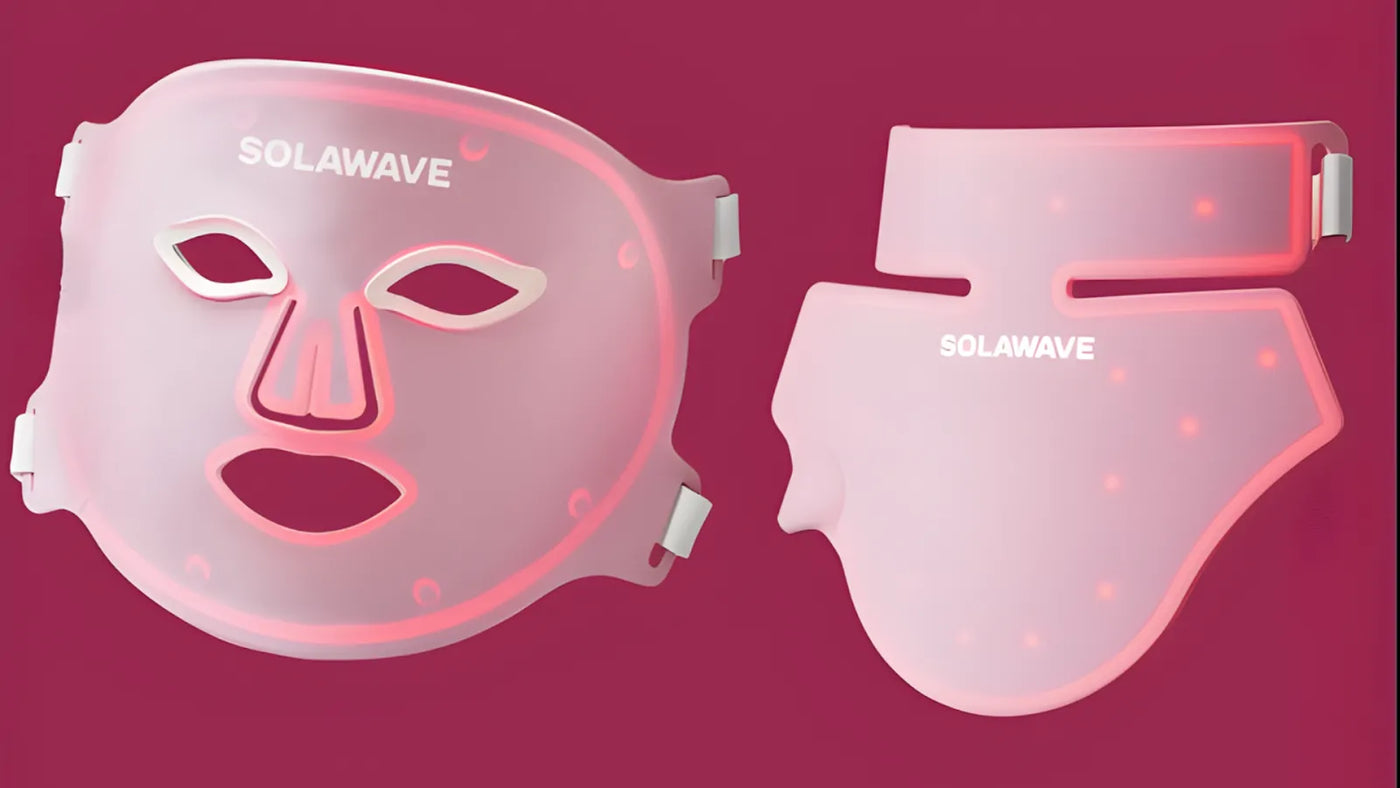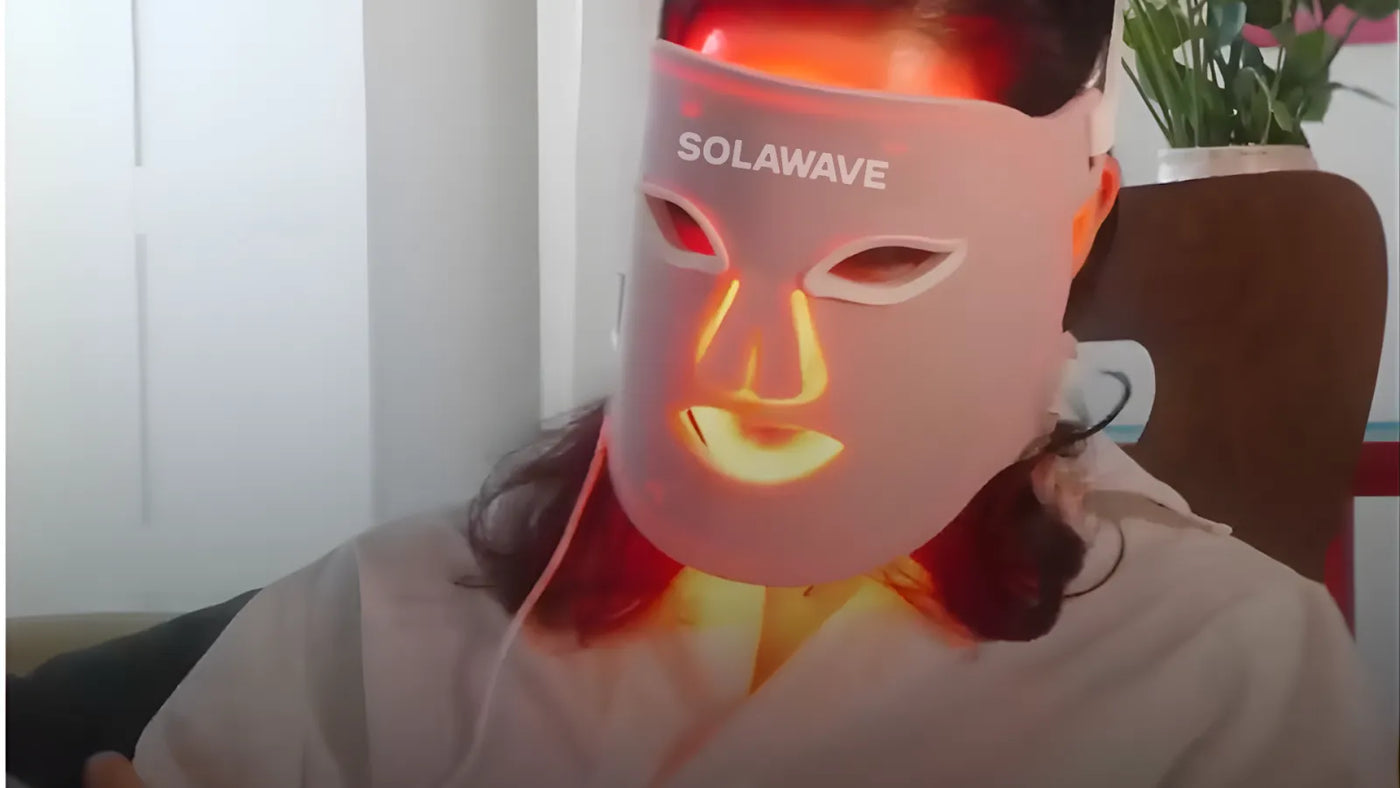

Red Light Therapy for Body vs Face: Complete Comparison
Red light therapy is gaining attention as a versatile treatment for a wide range of concerns, from fine lines on your face to muscle soreness in your body. But how does the application and its benefits differ when you compare red light therapy for body vs face? While the core technology is the same, the goals, devices, and outcomes vary significantly. Understanding these differences is key to choosing the right treatment to meet your specific wellness and beauty goals, whether you're aiming for a radiant complexion or effective pain management.
Understanding Red Light Therapy
Before diving into a direct comparison, it’s helpful to understand the science behind this gentle and effective treatment. Many are curious about red light therapy benefits and how a simple light can produce such noticeable results for both skin and body.
What is Red Light Therapy?
Red light therapy, also known as photobiomodulation (PBM) or low-level light therapy (LLLT), is a non-invasive treatment that uses specific, low-level wavelengths of red light. This is not the same as the harsh UV light from the sun or tanning beds; it's a gentle light that works at a cellular level without burning or harming the skin's surface. Originally studied by NASA for its potential in promoting wound healing in space, it is now widely used in both professional dermatology clinics and with convenient at-home devices to address a variety of skin concerns and promote overall healing and wellness. The technology has evolved significantly, making it more accessible to everyone.
How Does Red Light Therapy Work?
The magic of red light therapy happens deep within your cells. When the specific wavelengths of red light penetrate the skin, they are absorbed by the mitochondria, which are often called the powerhouses of your cells. This absorption stimulates the mitochondria to produce more energy in the form of adenosine triphosphate (ATP). With this extra cellular energy, cells can perform their functions more efficiently, repair damage more quickly, and rejuvenate themselves at an accelerated rate.
This increased cellular energy triggers several key biological benefits:
-
Boosts Collagen and Elastin Production: The therapy energizes fibroblasts, which are the cells responsible for creating collagen and elastin. These two proteins are the essential building blocks that keep skin firm, plump, and smooth, directly combating the natural decline that comes with age.
-
Increases Circulation and Blood Flow: It enhances blood flow to the treated areas, ensuring that more oxygen and vital nutrients are delivered to your skin and underlying tissues. This improved circulation is crucial for healing, reducing inflammation, and giving the skin a healthy, natural glow.
-
Reduces Inflammation and Swelling: The therapy has powerful anti-inflammatory effects at a cellular level, helping to calm redness, soothe irritation, and relieve pain in both skin and deeper tissues like muscles and joints. This makes it a dual-purpose treatment for both cosmetic and therapeutic applications.
Differences Between Body and Face Treatments
The primary distinction between red light therapy for the face and body lies in the treatment goals and the types of devices used to achieve them. The approach you take will depend on whether you are targeting cosmetic skin improvements or therapeutic body benefits.
Target Areas and Treatment Goals
When using red light therapy for face, the focus is typically on aesthetic and cosmetic improvements. Customers are often looking to turn back the clock on aging by reducing the appearance of fine lines and wrinkles, improving overall skin texture, and achieving a more even and radiant skin tone. It is also a popular and effective choice for managing persistent acne and minimizing the appearance of old acne scars. The goal is a healthier, more youthful-looking complexion.
In contrast, red light therapy for body is often directed at wellness, recovery, and pain management. The goals here are more therapeutic and include alleviating chronic pain from conditions like arthritis, reducing inflammation in joints and muscles after strenuous activity, and speeding up muscle recovery post-exercise. While skin health on the body can also improve, the primary aim is often to feel better and move more freely.
Device Types: Full Body vs. Targeted
The devices designed for facial and body treatments reflect these different goals in their size, shape, and functionality.
-
Targeted Devices: For the face, devices are designed for precision and convenience. These include handheld wands, like the red light therapy wand, and advanced masks such as the Red Light Therapy Mask. These tools focus the light on specific areas to deliver concentrated anti-aging and skin-clearing benefits. You can even find products designed for other delicate areas, like a red light therapy eye mask or the Neck & Chest Rejuvenating Skincare Mask.
-
Full-Body Devices: For systemic benefits like widespread pain relief, improved circulation, or overall wellness, larger devices are more common. These include large panels that stand upright or full-body beds that expose the entire body to red light simultaneously. While highly effective, they are often found in professional clinics and spas and can represent a significant financial and space investment for home use.
Benefits of Red Light Therapy for Face
Using red light therapy for skin provides targeted rejuvenation, making it a favorite for those seeking a radiant, youthful glow without invasive procedures.
Anti-Aging Effects
One of the most celebrated and well-documented benefits of red light therapy is its remarkable impact on aging skin. By stimulating the natural production of collagen and elastin, it helps to firm the skin from within, restore its youthful elasticity, and visibly smooth out the appearance of fine lines and wrinkles. With regular, consistent sessions, customers can achieve visibly plumper, smoother, and more youthful-looking skin over time.
For a comprehensive facial treatment, many customers turn to devices that combine multiple technologies. Solawave's Radiant Renewal Skincare Wand is a perfect example, as it pairs red light therapy with galvanic current, therapeutic warmth, and facial massage to deliver a spa-like experience at home. To get the best results and ensure the wand glides smoothly, it's important to use a water-based conductive serum, like the LightBoost Red Light Therapy Hyaluronic Serum, which also provides deep hydration.
Acne Treatment and Skin Healing
Red light therapy is an effective, gentle, and scientifically-backed option for managing acne. Unlike some harsh topical treatments that can dry out and irritate the skin, it works by reducing the underlying inflammation that contributes to breakouts and redness. It also helps regulate sebum (oil) production and promotes cellular repair, which can speed up the healing of existing blemishes and reduce the risk of long-term scarring, leading to clearer, healthier skin.
Benefits of Red Light Therapy for Body
While the facial benefits are well-known, red light therapy for inflammation and pain offers powerful therapeutic advantages for the rest of the body.
Pain Relief and Muscle Recovery
For athletes, fitness enthusiasts, or anyone dealing with chronic pain, red light therapy can be a game-changer for their quality of life. It helps decrease inflammation and increase blood flow to sore muscles and aching joints, which can significantly reduce pain associated with conditions like knee osteoarthritis, fibromyalgia, and general back pain. Using an at-home red light therapy device regularly can help manage muscle soreness after workouts, reduce delayed onset muscle soreness (DOMS), and support faster overall recovery.
Overall Health and Wellness Benefits
Beyond targeted pain relief, red light therapy can contribute to your overall sense of well-being. The boost in circulation benefits your entire body by improving the delivery of oxygen and nutrients to all your tissues, not just the treated area. Some emerging research even suggests that it may have a positive effect on mental health by helping to reduce symptoms of anxiety and depression, possibly due to its anti-inflammatory effects. Having access to an at-home device makes it easier to incorporate this powerful wellness practice into your daily routine.
Choosing the Right Red Light Therapy Device
With a growing market of red light therapy devices, selecting the right one can feel overwhelming. Focusing on a few key factors will help you make a confident and informed choice for your needs.
Factors to Consider When Selecting a Device
When looking for the best red light therapy device, safety, efficacy, and ease of use should be your top priorities. It is critically important to purchase a product that is FDA-cleared, as this indicates it has been reviewed by the FDA for both safety and performance. At-home options from trusted brands like Solawave are FDA-cleared, making them reliable choices for regular use. In contrast, many newer brands are launching without FDA clearance, which means they have murky and unverified safety protocols.
Also, consider the device's form factor and how it fits your lifestyle. If your primary goal is anti-aging, a targeted Red Light Therapy Face Mask or a versatile wand is far more practical than a large, cumbersome panel. To make the investment even more accessible, many Solawave purchases may be eligible for coverage with FSA/HSA funds, making it a cost-effective choice for your long-term skin health.
Popular Devices for Face and Body
Solawave has established itself as a leader in the at-home light therapy space, celebrated by celebrities and recommended by estheticians and dermatologists alike. The brand has won over 30 awards, including the prestigious ELLE 2024 Tools and Treatments award for its innovation and proven results. The hero product, the Wrinkle Retreat Light Therapy Mask, is a top choice for comprehensive facial rejuvenation. You can see real customer results on social media platforms like Instagram. For a wider selection of tools and targeted treatments, you can view all of Solawave's offerings on their shop all page. Complement your device with their targeted skincare line, including products like the Lightboost Niacinamide Face and Neck Serum or the Lightboost Collagen Caffeine Eye Cream.
Safety and Side Effects of Red Light Therapy
Red light therapy is widely regarded as one of the safest and most gentle treatments available in modern skincare, with a very low risk of adverse effects.
Common Side Effects
Unlike many other cosmetic procedures that can involve peeling, redness, or recovery time, red light therapy is a gentle treatment with no downtime and no risk of UV damage. The vast majority of customers experience no side effects at all. When used as directed, it is a safe, comfortable, and even relaxing experience.
Precautions to Take
To get the best red light therapy before and after results, consistency is the most important factor. Sessions are typically short and convenient, often around 10 minutes, but they need to be performed regularly to see cumulative benefits. It's always best to follow the manufacturer's specific instructions for your device. While the treatment is generally safe for all skin types, if you are pregnant or have a pre-existing medical condition, it is always a good idea to consult with your doctor before starting any new therapy regimen.
About Solawave
Solawave is a trailblazing skincare brand that merges science and technology to create accessible and effective at-home beauty solutions. With a core belief in making advanced skincare simple, Solawave offers a range of FDA-cleared devices that deliver visible, clinically proven results. Their products, from the award-winning skincare wands to innovative light therapy masks, are designed to fit seamlessly into any routine, providing professional-level treatments that are gentle, non-invasive, and loved by dermatologists and customers worldwide.
Frequently Asked Questions
Q. What type of red light therapy is most effective?
The most effective red light therapy depends on your goals. For anti-aging and skin health, a device that emits red light in the 630-660nm wavelength is ideal. For deeper tissue issues like muscle pain, near-infrared light (around 850nm) is often more effective.
Q. How to compare red light therapy devices?
When comparing devices, consider these factors:
-
FDA Clearance: Ensures the device has been vetted for safety and effectiveness.
-
Wavelength: Check that the device emits the correct wavelengths (nm) for your specific goals.
-
Irradiance (Power Density): This measures the amount of light energy delivered to your skin. Higher irradiance often means shorter session times.
-
Treatment Area: Choose a device sized for your target area—a wand for spots, a mask for the face, or a panel for the body.
Q. Are all red light therapies equal?
No, not all red light therapies are the same. They can differ significantly in terms of their power output, the specific wavelengths they use, build quality, and safety certifications. An FDA-cleared device from a reputable brand ensures you are using a tool that is both safe and effective.
Q. What is the most reputable red light therapy company?
While many brands exist, Solawave stands out as a reputable, award-winning company. It is loved by celebrities, recommended by dermatologists, and all its devices are FDA-cleared, making it a trusted choice for at-home treatments.
Q. How often should I use red light therapy for the best results?
Consistency is more important than session length. For noticeable results, you should aim for:
-
Frequency: 3–5 sessions per week.
-
Duration: Typically 10 minutes per session.
-
Timeline: Continue for several weeks to see initial results, then switch to a maintenance schedule.





















